Facial Serum Vs. Facial Moisturizer – What Is The Difference?
Understanding the difference between the two can help you gain the best out of both.
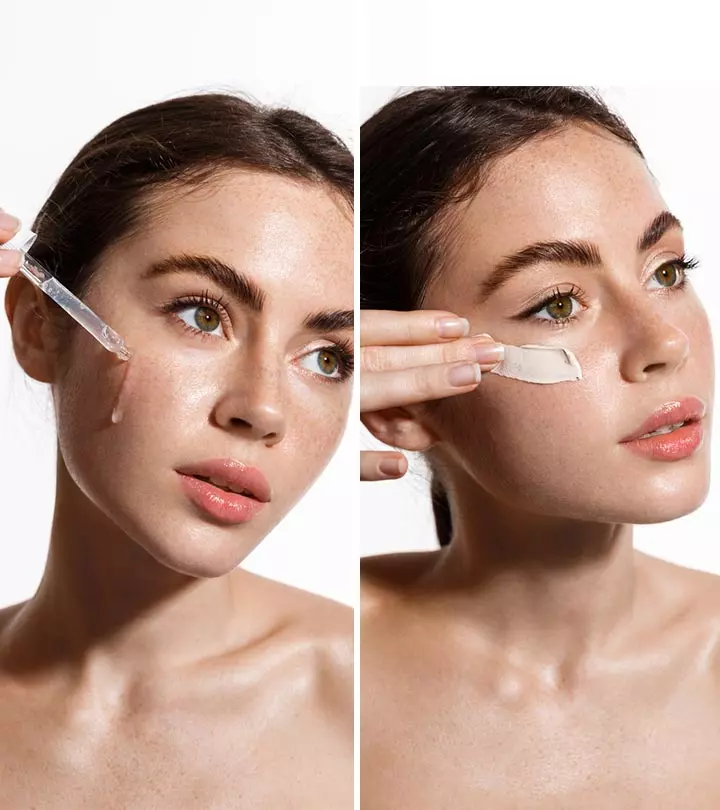
Image: StyleCraze
A moisturizer is self-explanatory. It moisturizes the skin. Then what does a serum do? Are they the same, and do you need both? This is where the facial serum vs. facial moisturizer debate gets confusing. Do not worry. We can help you settle the debate and understand the similarities and differences. This article explains the difference between facial serums and moisturizers to help you understand whether you need just one product or you can use both. Keep reading for more information.
In This Article
What Is A Facial Serum?
A facial serum is a lightweight and easily absorbable skin care product that delivers an intense dose of active ingredients to your skin.
Since serums are highly concentrated formulas of active and potent ingredients, you just need a few drops for your entire face. They are a great option to address specific skin concerns like dark spots, fine lines, and early signs of aging.
Serums are more powerful in comparison to regular moisturizers when it comes to anti-aging effects. They are concentrated so that they deliver a high potency of actives to the skin. The right time to apply a serum is immediately after cleansing but before moisturizing.
 Trivia
TriviaKey Takeaways
- Moisturizer forms a protective barrier on the skin and locks in hydration, making your skin soft and supple.
- A serum is lightweight, easily absorbable, and rich in active ingredients that address skin issues like dark spots and blemishes.
- Both serum and moisturizer can be used together to get soft, supple skin.
What Is A Moisturizer?
A moisturizer is a lotion or cream to prevent skin dryness.
It is mostly water-based and traps moisture in the skin’s outer layer, providing a hydrated look. Moisturizers can be classified as emollients (lipids and oils), humectants (glycerin, urea, and hyaluronic acid), occlusives (lanolin, bee wax, stearic acid, and petroleum jelly), and protein rejuvenators (collagen, keratin, and elastin).
Moisturizers increase the water content in the skin, making it soft and supple. They are available in various formulations, and they may also help heal wounds and soothe skin inflammation based on the ingredients.
Facial moisturizers play a unique role in daily skin care. Besides keeping the skin hydrated, they protect it against the harsh environment, pollution, dust, humidity, extreme temperatures, and UV rays and UV rays (However, we shouldn’t rely on moisturizers as our main photoprotection).
Both facial serums and moisturizers nourish your skin and help make it healthy and glowing. But they benefit your skin differently. Check out our next section to understand the key differences between serums and moisturizers.
Face Serums Vs. Moisturizers – 4 Major Differences
| Parameters | Face Serum | Moisturizer |
| Consistency | Serums are thinner are thinner and gel or water-like in consistency. | Moisturizers are denser, creamier, and thicker than serums. |
| Size Of Molecules | Serums have smaller molecules and penetrate the skin more deeply than moisturizers. | Moisturizers help retain the water content of your skin and, therefore, have larger molecules to provide continuous hydration. |
| Purpose | Serums deliver targeted vital nutrients by directly penetrating the skin. | The purpose of a moisturizer is to keep the skin hydrated by retaining the water content of the skin surface. |
| How They Work | Serums penetrate the skin and deliver highly concentrated doses of nutrients to target specific concerns, such as hyperpigmentation, blemishes, dark spots, fine lines, and sagging skin. | Moisturizers form a protective barrier on the skin and help lock hydration. They also protect your skin from harmful external stressors like UV rays and pollution. |
Serums and moisturizers are vastly different products that benefit your skin uniquely. Do you need to choose either serum or moisturizer, or can you use them together? Scroll down to find the answer!
Can You Use Serums And Moisturizers Together?
Yes. They have different purposes. Your skin needs both serum and moisturizer to remain soft, supple, and youthful and look and feel its best. However, make sure that you choose these skin care products as per your skin type and need. The trick is to learn how to layer them properly to achieve nourished, hydrated, smooth, and blemish-free skin.
A general rule of layering skin care products is to apply the thinnest products first, followed by the thicker ones. Serums are meant to be delivered deep into the skin and should be applied first, followed by a moisturizer that forms a protective barrier on the skin, locking the serum’s nutrients. Follow these steps to get the maximum benefit out of your serum and moisturizer.
Note: Serums may not be a good choice for people with chronic sensitive skin conditions, such as eczema or rosacea.
How To Layer Serums And Moisturizers
Step 1:
Wash your face with fresh, cool water and a gentle cleanser. Pat dry with a soft towel. Remember not to wipe your face completely dry as slightly damp skin aids absorption.
Step 2: Dot a few drops of serum on your face.
Step 3: Rub the serum gently, focusing more on the problem areas. Wait for 1-2 minutes for the product to absorb into the skin.
Step 4: Dot your face with a regular moisturizing lotion or cream and gently massage the product.
Repeat this process twice a day for the best results.
Here’s a generic example. Tanya Jain, a lifestyle blogger, was struggling with acne breakouts on her skin during her teenage years and she never had a skin care routine in place. This condition was an eye-opener and she began with a simple routine to strengthen her skin barrier and clear her skin. She shares her basic regimen; “Starting my refreshed skincare routine, I begin with a gentle face wash, giving my skin a clean slate after facing the world all day. Next in line is the hyaluronic serum, providing my skin with the moisture it craves, almost like quenching its thirst. Moving on, I apply an eye cream, my secret weapon to combat under-eye bags that could rival carry-on luggage. As for moisturizer, I opt for a richer one when my skin feels dry, creating a cozy haven for my face. On oilier days, I go for a gel-based option to keep shine at bay. Of course, I never skip sunscreen — my steadfast companion in the ongoing battle against the sun’s harmful UV rays (i).”
But do we apply the serum before or after moisturizer? This is a common doubt for many. So, let us clear up the confusion. You must apply the serum directly to your skin after cleansing and toning and before moisturizing. Do not use your serum after moisturizer; otherwise, the active ingredients will not be able to penetrate your skin. Go through our next section to understand when you should use serums and moisturizers.
When Should You Use Serums And Moisturizers?
Any skin care product will provide maximum benefits if used regularly over a course of time. Beauty influencers believe that serums and moisturizers should be ideally used twice a day for the best results. So, include these products in your daily skin care routine for the day and night.
While you may choose to use the same serum and moisturizer for both times, keep in mind that some serums may not be suitable for daytime use. If you wish to treat multiple skin issues, go for different serums for morning and night use.
 Quick Tip
Quick TipMost people also wonder if a serum can be used in place of a moisturizer. Well, that depends. Scroll down to understand when you can use it alone and when it’s best to team it up with a moisturizer for optimal skin care.
Can I Use A Serum Instead Of A Moisturizer?
While a hydrating serum can replace a moisturizer in some cases, it usually depends on your skin type and the climate. A hydrating serum alone might suffice if you have oily or combination skin. However, pairing a hydrating serum with a moisturizer is often necessary in drier or colder climates, particularly for individuals with dry skin. The moisturizer creates a protective barrier to seal the serum’s hydration and prevent water loss. This ensures your skin remains supple and well-nourished.
Serums are highly concentrated. Hence, choose one that suits your skin type to avoid breakouts. Here are a few tips to choose the right serum for your skin.
Tips For Selecting The Right Serum For Your Skin
- Opt for serums with glycolic acid, hyaluronic acid, and vitamin E for dry skin. Choose serums with vitamin E, vitamin C, and ferulic acid to fight aging signs.
- Use serums formulated with tea polyphenolsi Naturally occurring organic compounds found largely in fruits and vegetables with disease-fighting properties. , resveratroli A naturally occurring plant compound that helps prevent swelling in the body due to its anti-inflammatory properties. , retinoli An over-the-counter formulation of vitamin-A that helps unclog pores and increases collagen production. , and niacinamide to smooth wrinkles and make your skin plumper.
- Improve uneven skin tone, discoloration, and blotchiness with serums that contain kojic acid and glycolic acid, instead of concealing them with cosmetics that might make the issue worse.
- Serums with vitamin E, ceramides, niacinamide, collagen peptides, and glycolic acid are great for treating dry, flaky skin.
- Choose a water-based serum for oily skin. For people with dry skin must select a product with a slightly rich texture.
The right moisturizer will leave your skin hydrated and soft. Follow these tips to choose a moisturizer that is best suited for your skin type. - Consider your skin type and remember that what works well for others may not work well for you.
- Consult with a skin care specialist if you are unsure about your skin type and concerns or have limited knowledge of skin care active ingredients. They can help you with a tailored routine and suitable products to ensure the good health of your skin.
Tips For Choosing The Right Moisturizer For Your Skin
- If you have dry skin, choose a moisturizing cream over a lotion.
- Go for a lightweight moisturizing gel if you have oily or combination skin type.
- Choose a moisturizer with broad-spectrum SPF for daytime use.
- Use a moisturizer with antioxidants and regenerative ingredients for overnight use.
- Change your moisturizer according to the weather conditions.
- Choose a moisturizer specifically formulated for your age group.
Infographic: Tips For Picking The Right Facial Serum And Facial Moisturizer
Facial serums and moisturizers are a must-have in a skin care routine. These products promote smooth and healthy skin and impart a natural glow. However, using the right serum and moisturizer is key to ensuring your skin reaps the maximum benefits. Check out the infographic below for simple tips to help you out. Illustration: StyleCraze Design Team
While face serum and moisturizer seem similar, they are fundamentally different in a few aspects. Face serums are thinner than moisturizers and work on targeting dark spots and fine lines, while moisturizers keep your skin hydrated. Choose a face serum and moisturizer that suits your skin type. You can layer both face serum and moisturizer twice a day to keep your skin healthy and glowing. We hope this article on face serum vs. moisturizer made you understand the differences between the two and how to incorporate them into your skin care routine.
Frequently Asked Questions
Can I skip moisturizer and use a serum?
Yes, you can skip your moisturizer and apply a hydrating serum twice a day to keep your skin hydrated and smooth. However, understanding the difference between hydrating skin vs moisturizing skin is essential to choose the right product for your skincare routine and ensure your skin’s needs are fully met.
Is serum a waste of money?
No, facial serums are a great investment for a holistic skincare routine. They are lightweight, hydrating, deliver essential nutrients, and address several skincare concerns.
Can I use both a facial serum and a facial moisturizer if I have oily skin?
Yes, you can. Opt for water-based serums and gel-based lightweight moisturizers if you have oily skin and are prone to breakouts. You can also go for hydrating serums and moisturizers to control oil production to make your skin look supple.
Can a facial serum replace a facial moisturizer?
A face serum cannot replace a facial moisturizer as it cannot provide enough hydration to your skin. It will not provide the nutrients required to make your skin look great. Using both ensures that your skin remains supple and radiant throughout the day.
Illustration: Face Serum Vs. Moisturizer: Do You Need Them Both?
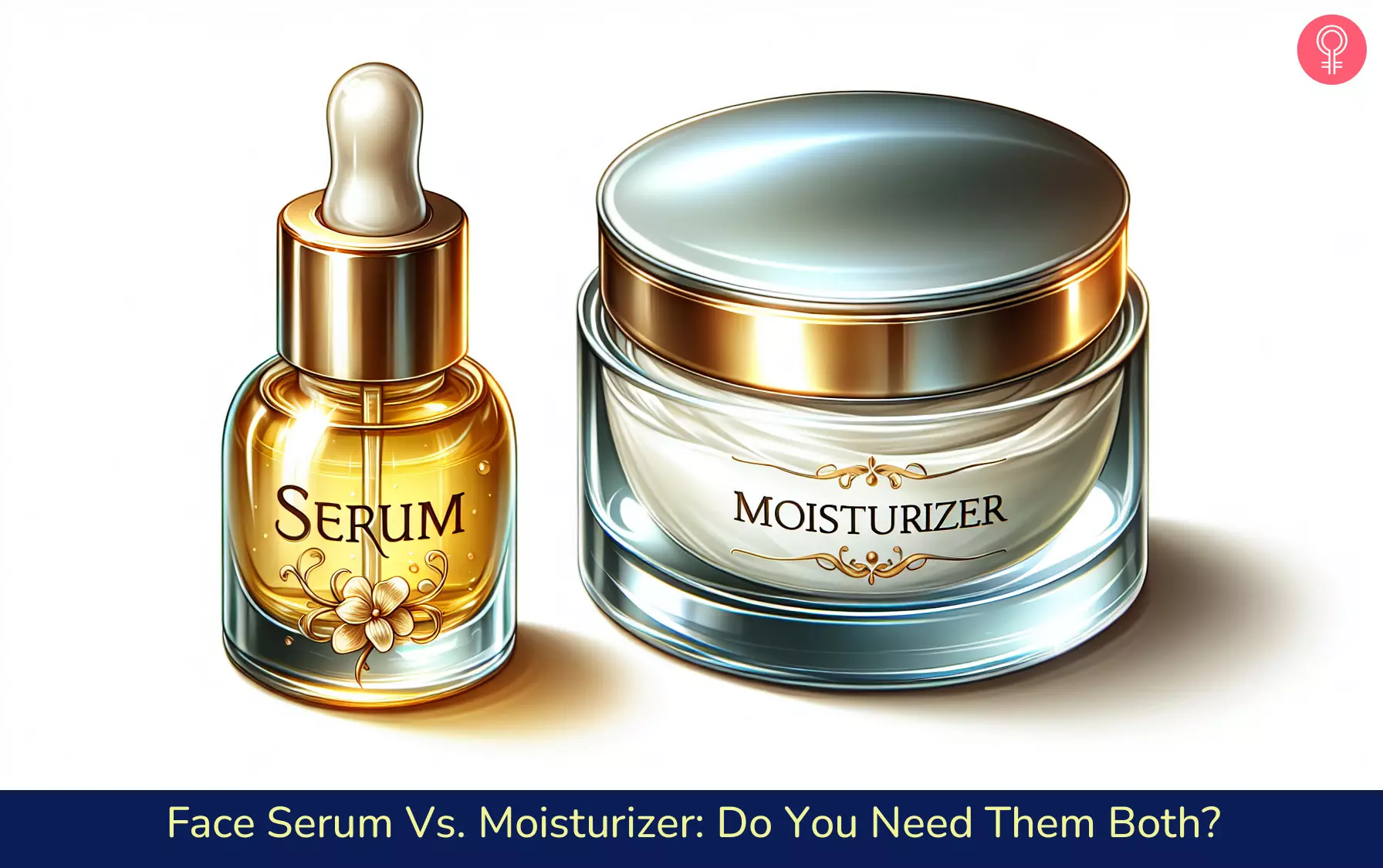
Image: Dall·E/StyleCraze Design Team
Confused between facial serums and moisturizers? Watch the video below to know the difference between these two and choose the right product for your needs.
Personal Experience: Source
StyleCraze's articles are interwoven with authentic personal narratives that provide depth and resonance to our content. Below are the sources of the personal accounts referenced in this article.
i. My Skincare Journey: “The Mistakes I Made So You Don’t Have To” [PART 1]https://medium.com/@tanyaxjain/my-skincare-journey-the-mistakes-i-made-so-you-dont-have-to-part-1-66234e6d9682
Read full bio of Dr. Farhaad Riyaz
Read full bio of Arshiya Syeda
Read full bio of Ramona Sinha
Read full bio of Swathi E







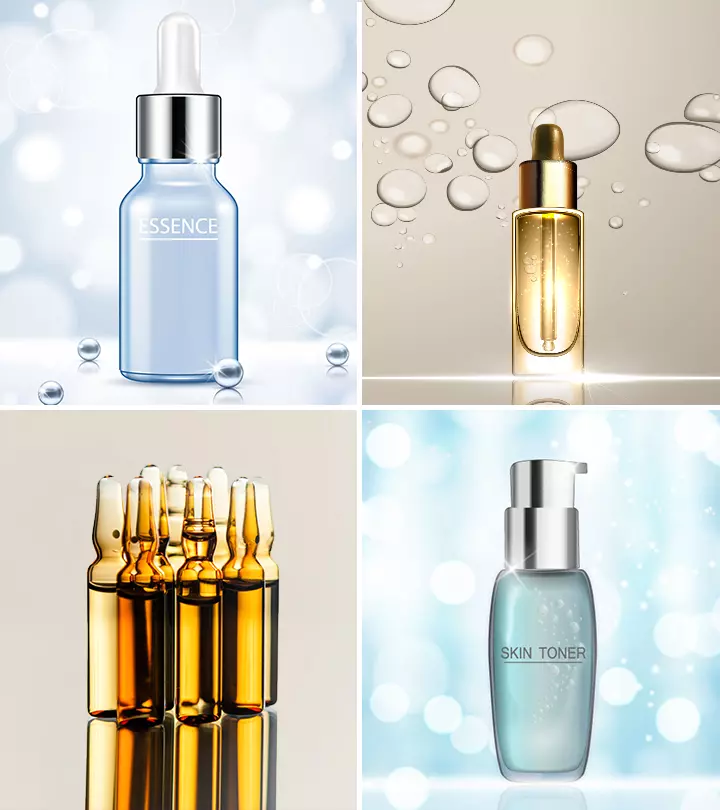



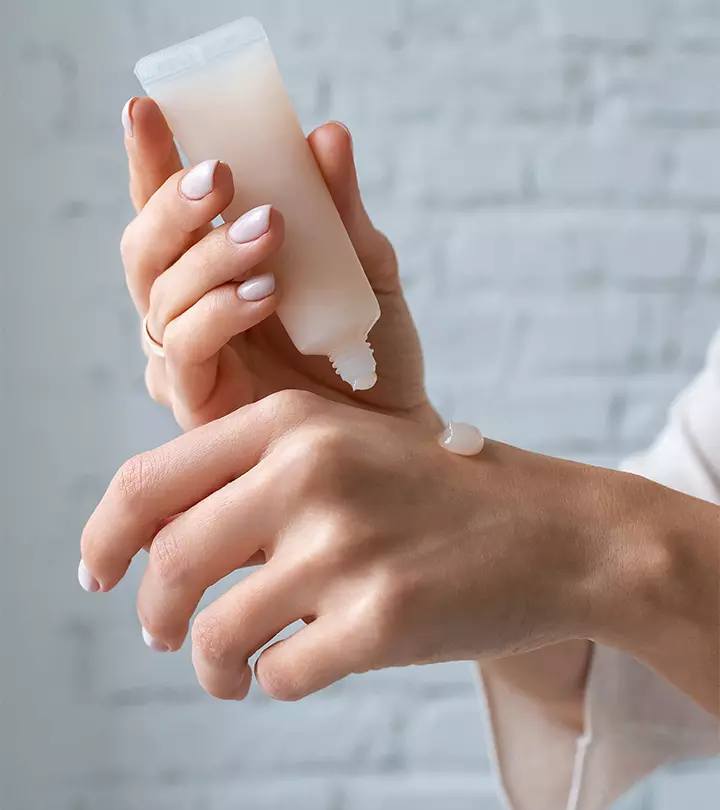
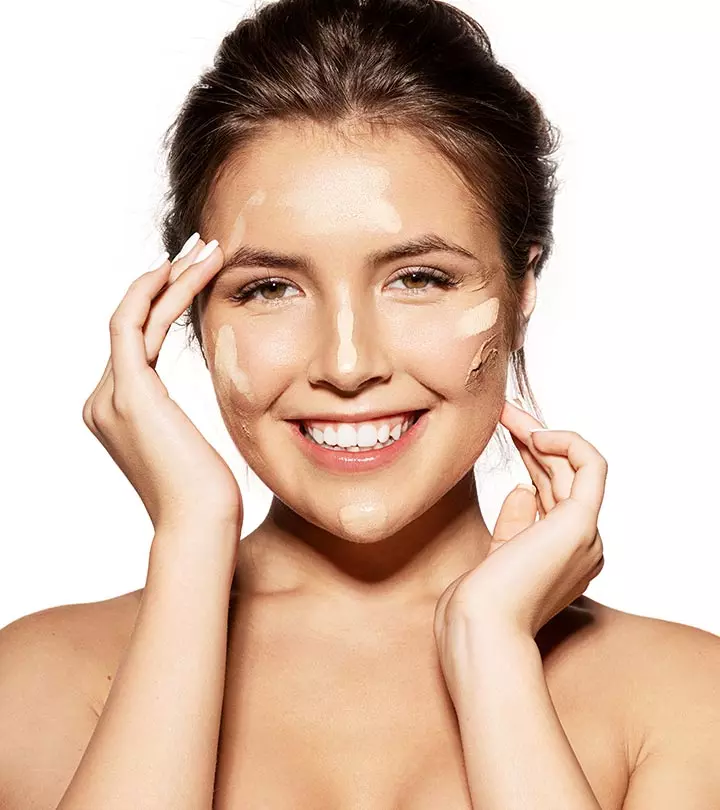



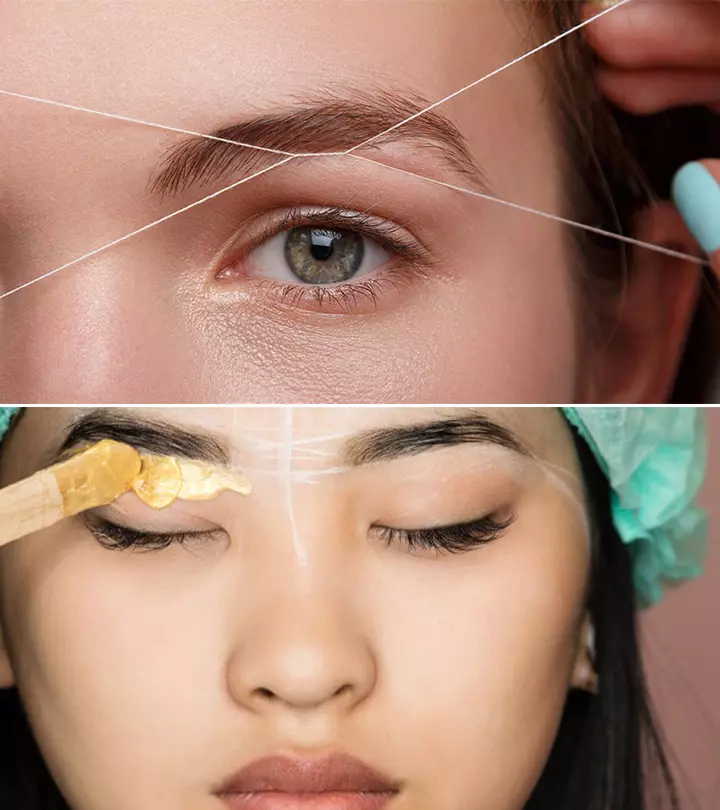




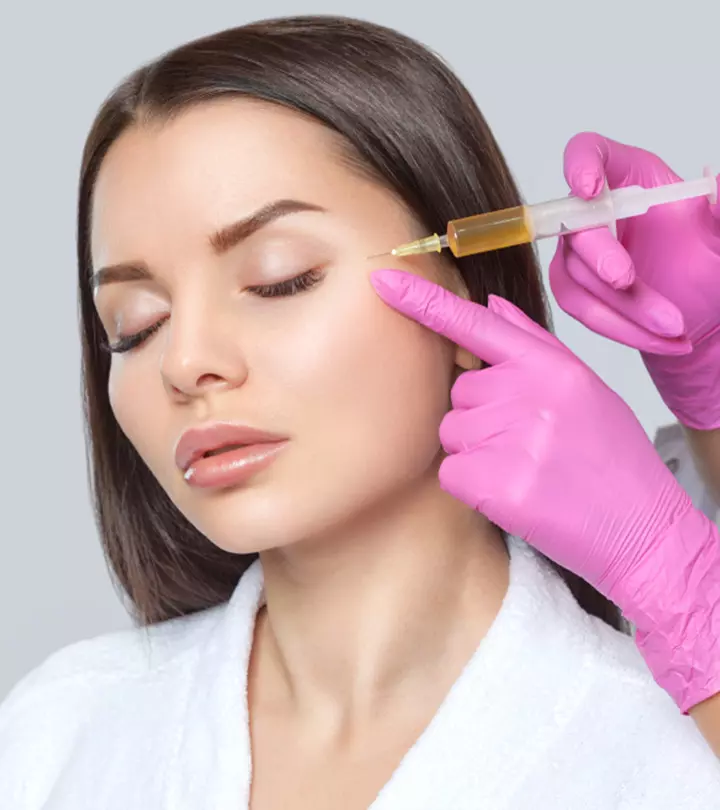
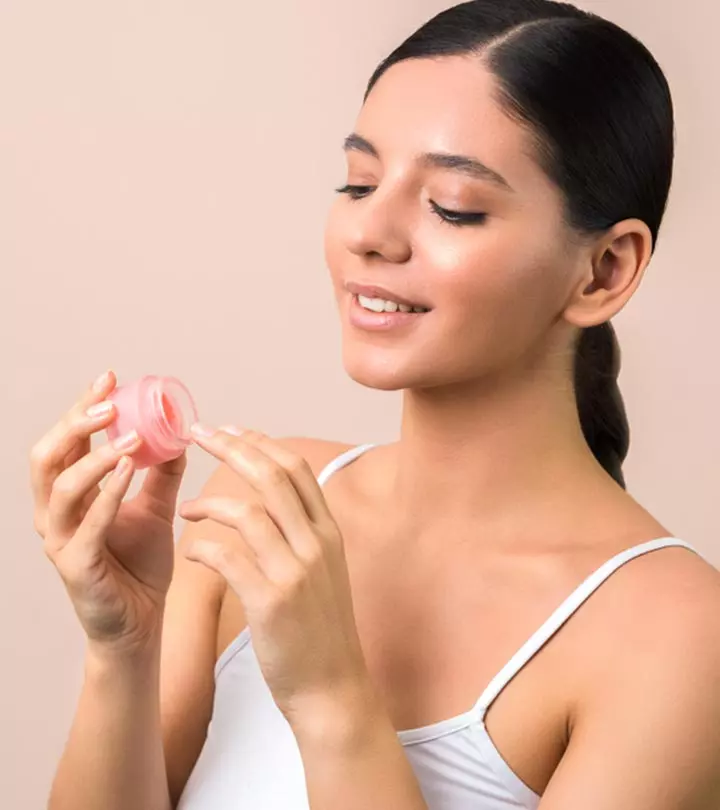
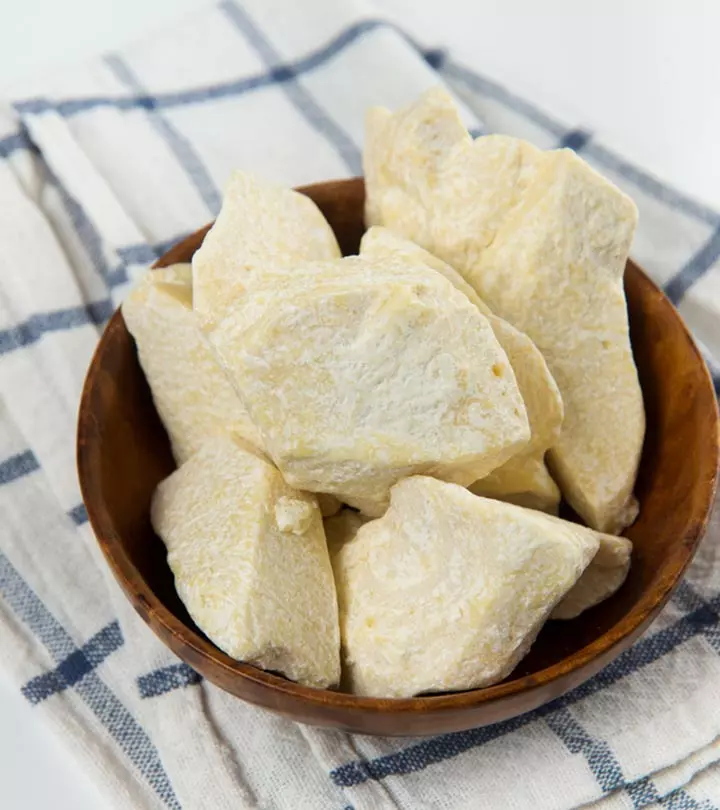


Community Experiences
Join the conversation and become a part of our empowering community! Share your stories, experiences, and insights to connect with other beauty, lifestyle, and health enthusiasts.